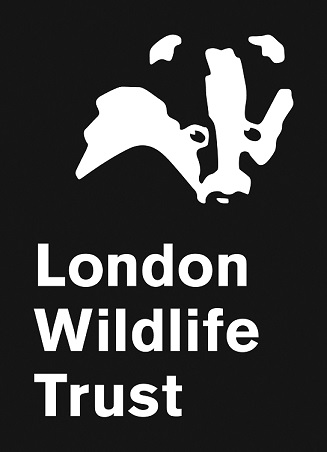Unlike us, butterflies are more akin to reptiles in that they rely on external sources of heat to warm their bodies and stay active, so cold winter temperatures could spell trouble. Migrant species who take their summer holidays in Britain such as painted ladies and clouded yellows have already packed their bags and flown south to sunnier climes but what of those that remain? Luckily, resident butterflies have evolved to deal with seasonality by entering a dormant phase, referred to as overwintering, and often likened to hibernation. This dormancy can either be as an adult butterfly, caterpillar (larva), pupa (chrysalis) or egg and varies according to species.
Where have all the butterflies gone?
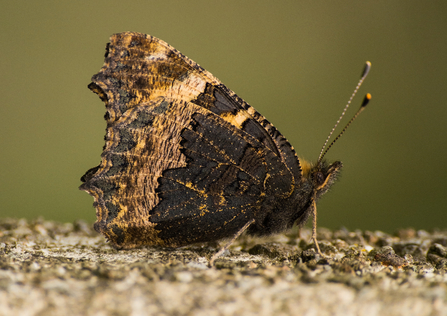
Of the 57 native British butterfly species, five of them spend the winter as adult butterflies: brimstone, peacock, comma, small tortoiseshell and red admiral. Peacock and small tortoiseshells are the ones most likely to be found sheltering indoors in sheds and garages whereas the others will tuck themselves away in log piles, evergreen vegetation, crevices or down animal burrows. Evolution has seen to it that all five of these species have developed disguises to help keep them safe from predators while they are holed up for the colder months. Peacocks, small tortoiseshells and red admirals have an invisibility cloak…of sorts – they all have very dark patterns on their underwings so with wings closed, tucked away in a dark corner, they are almost imperceptible. Remarkably, peacocks have also developed an additional defence mechanism – they hiss by rubbing their wings together, audibly enough to frighten off any would-be predators who might disturb them.
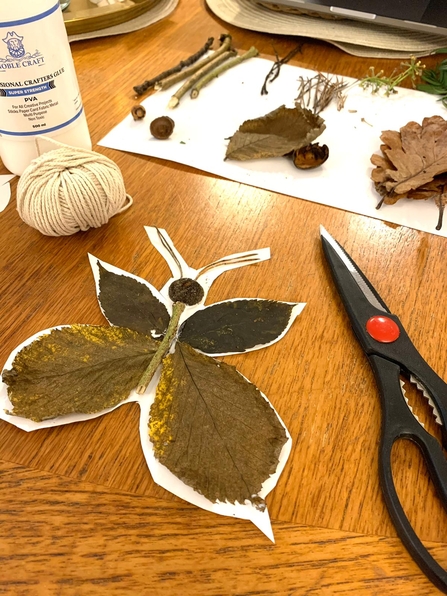
With their strongly veined, acid-green wings, brimstones have a very leaf-like appearance and consequently are likely to conceal themselves in winter vegetation that looks similar to themselves, such as ivy. Commas are more of an enigma and very few have been caught in the hibernating-act. Their distinctive ragged edged wings and mottled brown colouring makes them look just like a dead leaf so perhaps they are right before us, amongst fallen foliage, but their disguise is just too effective for us to notice them…
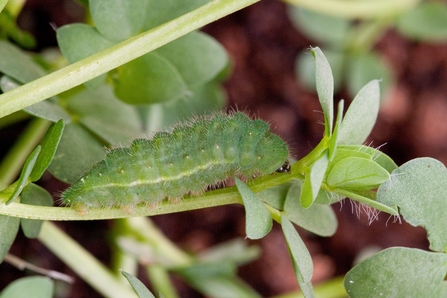
On warm winter days any of these torpid adults may be woken up and go in search of food so you might catch sight of a winter wanderer winging its way towards a nectar source; red admirals are particularly susceptible to disturbed sleep and have become a common wintertide sight.
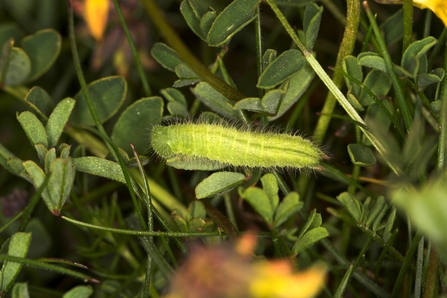
The majority of species, 31 to be exact, spend the winter as caterpillars most of which are secreted away in dense grassland vegetation. This highlights just how important our meadow habitats are for butterflies and is why some areas should be left uncut during winter to allow for larval hiding places. Like their adult counterparts, many caterpillars will also go incognito by changing their colour to a more muted shade in order to remain less conspicuous during their dormancy.
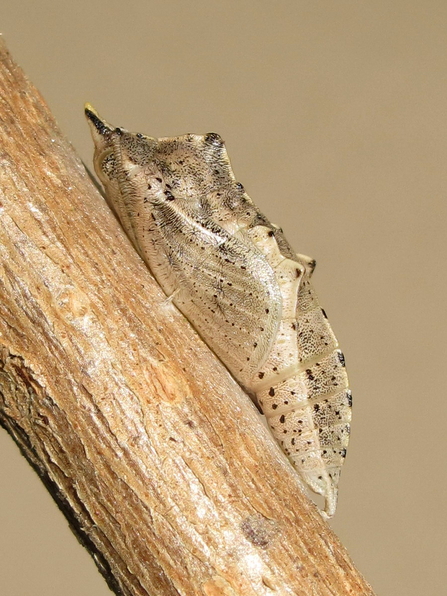
Eleven species spend the winter as a pupa or chrysalis including the holly blue, large and small whites and orange tip. Larvae take their time to select a suitable pupation location as in most cases the pupa will need to remain in place for seven to nine months, therefore sturdy, sheltered spots are preferred. Large and small whites, colloquially known as cabbage whites due to their caterpillars’ fondness for brassicas, will often pupate on a fence post, maintaining a pale brownish-grey colour to blend in and hopefully remain unseen by predators. Orange tips have a different method of camouflage as their bow-shaped pupae perfectly mimic a dead seed pod, whereas holly blue pupae are likely to be concealed at ground level for the winter months.
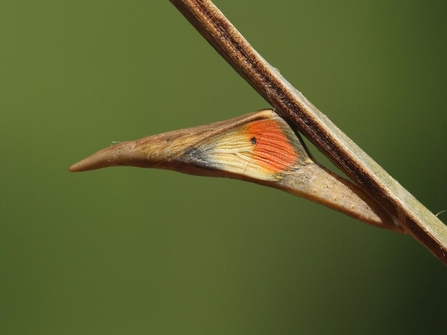
Butterfly eggs are stunning works of structural genius, resembling anything from sea urchins to flying saucers to hand-blown glassware but the trouble is, they are tiny, the largest being only a few millimetres across, so your chances of being able to marvel at many of these weeny wonders is slim. That said, you might be able to spy some examples from the nine species that remain as eggs over the winter. Four of Britain’s five hairstreak butterflies - black, brown, purple and white-letter - overwinter as eggs. Black and brown hairstreak eggs can both be found on blackthorn, easily distinguished at this time of year thanks to being laden with plump sloes. Black hairstreak eggs resemble minute brown buds and so are hard to spot but the white colouring of the brown hairstreak eggs means they stand out against the dark bark making the eggs easier to observe than the elusive late-summer adults.
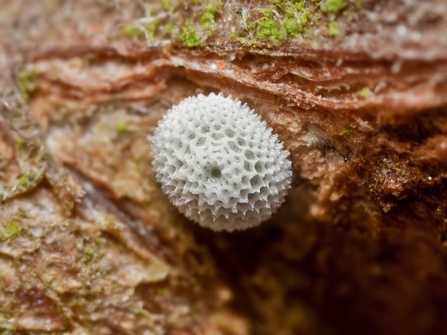
The speckled wood is unusual and unique amongst British butterfly species in that it can either overwinter as a caterpillar or a pupa. It is not clear why they have evolved this ability, but it is thought that temperature and day length play a part in which life cycle stage each individual will adopt.
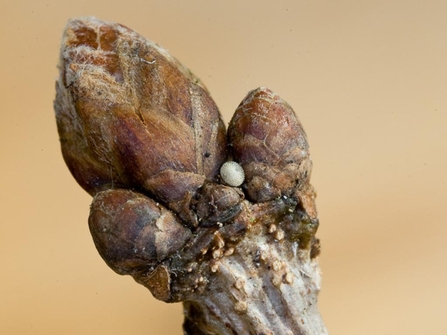
So there you have it, not truly gone at all, butterflies remain among us, their fascinating life cycle just on pause until spring. Despite missing the joy of summer butterfly spotting, I can’t help but feel their seasonality adds to butterflies’ appeal. If these fluttering beauties were abundant all year round, we might take them for granted and now, more than ever, we need things to look forward to. I, for one, already can’t wait to catch sight my first 2021 butterfly, heralding the start of spring and ushering in a new beginning.
London Wildlife Trust has partnered with the Natural History Museum and Butterfly Conservation on the Brilliant Butterflies project which is creating and restoring butterfly habitat across South Croydon and Bromley, thanks to players of the People’s Postcode Lottery – find out more here: https://www.wildlondon.org.uk/brilliant-butterflies
